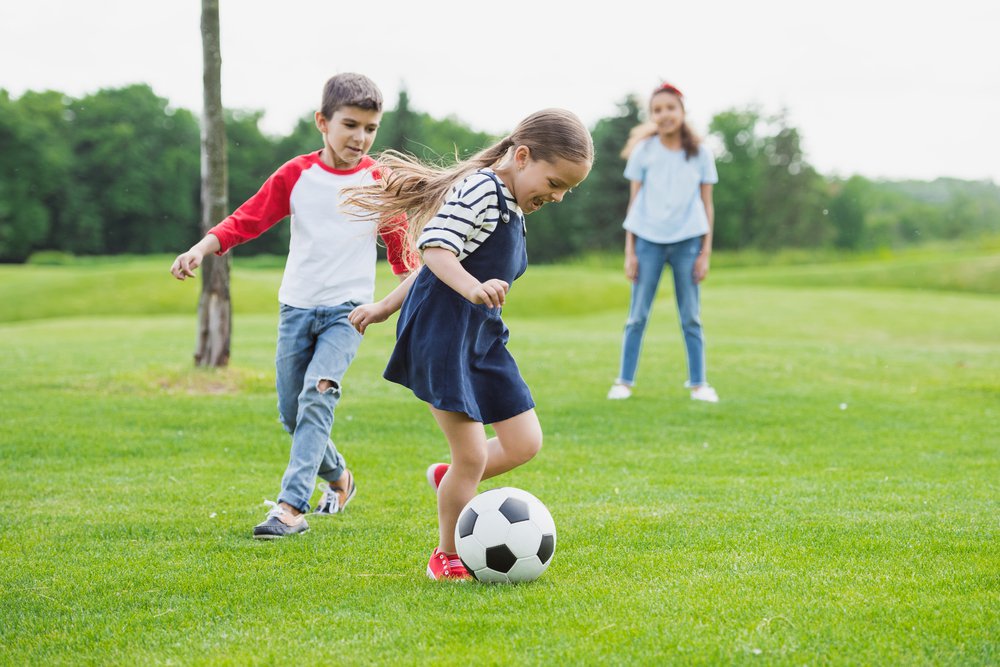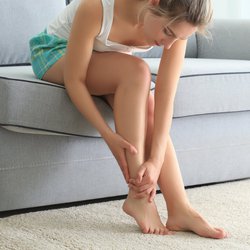 It's September, which means kids are back in school, parents are doing last-minute back-to-school shopping, and young athletes are preparing to get back out on the field! While participating in fall sports is a great way for kids to stay active, these activities can also lead to injuries if special precautions aren't taken.
It's September, which means kids are back in school, parents are doing last-minute back-to-school shopping, and young athletes are preparing to get back out on the field! While participating in fall sports is a great way for kids to stay active, these activities can also lead to injuries if special precautions aren't taken.
Here are some ways you can help your children prevent foot and ankle injuries this fall:
Go Back-To-School Shoe Shopping
According to Northern Illinois Foot And Ankle Specialists' own Dr. Patrick McEneaney, it's essential to check your kids' shoes and make sure they fit before the start of the school year. 'Kids may not be in the same size shoes they were at the end of the school year, or even over the summer,' he explains.
A child's feet can grow very quickly, but kids might not always bring up when their shoes have stopped fitting.
'My daughter had her shoes on the other day and her toes were all scrunched in,' Dr. McEneaney shares, 'but she didn't want to tell me because she really liked those shoes. They had sparkles on them, and she was afraid we'd get rid of them if they didn't fit.'
On top of not wanting to get rid of their favorite shoes, a child who wore sandals (or went barefoot) for most of the summer might not know that their shoes shouldn't squish their toes. Make sure to check that there's about a half-inch of space in front of the longest toe, and that the shoe bends where the foot bends.
If you're not sure whether your child's shoes fit properly, bring them into our office and we can help determine whether they need a new pair of shoes or even custom orthotics.
Make Sure They Have Proper Athletic Footwear
While you're shoe shopping, don't forget to pick up a good pair of athletic shoes if your child is planning on playing any sports this fall. Depending on the sport, they may need special shoes, like cleats for soccer or track, or court-specific shoes for basketball or tennis. Just a normal pair of running shoes may not be appropriate, as they 'may not be the best as far as providing shock absorption and allowing them to do their sport,' Dr. McEneaney says.
Most importantly, the shoes should be comfortable and fit well. They don't have to be the most expensive pair on the market, but they shouldn't be too big or too small, either. Hand-me-downs will need special consideration, as well.
If your child is going to wear hand-me-downs from an older sibling, friend, or neighbor, it's important to look at the shoes' footbeds, or the insert at the bottom of the shoes. 'A lot of times they'll be worn a certain way depending on the shape of the other person's foot,' Dr. McEneaney explains. Luckily, these inserts can be replaced, making the shoes safer and more comfortable to wear.
Worn-down treads or spikes, on the other hand, are worth avoiding. Treads and spikes are designed to provide traction and support, so if they're worn down, they can't do their job as well. Check the bottom of the shoes for any missing or worn-down spikes or treads before allowing your child to wear them on the field.
Teach Your Child Best Practices
As any sports medicine specialist will tell you, one of the best ways to avoid sports injuries is by warming up before playing, cooling down afterward, and stopping to rest when you're feeling pain. This is especially important for young athletes, whose bodies are still growing and developing.
Warming up can help prevent injuries by loosening muscles and preparing the body for physical activity. A good warm-up should include exercises to increase heart rate and blood flow, as well as stretching. Cooling down after exercise helps the body return to its pre-exercise state and can reduce pain and swelling.
Rest is also crucial for preventing injuries. If your child is feeling pain, have him or her take a break from physical activity. Overuse is one of the most common causes of sports injuries, so it's important to listen to the body and take breaks when needed.
Some common foot conditions that a child might face include heel pain, flat feet, plantar fasciitis, ingrown toenails, athlete's foot, and Sever's disease. Sever's disease occurs when the Achilles tendon pulls on the heel, where the growth plate is, causing pain and discomfort.
'It's something of a self-limiting problem,' Dr. McEneaney says. 'Once the growth plate closes, the problem goes away, but it can be very painful when it's going on. It usually starts around nine or 10 and it usually runs to about 12 or 13 years old.'
Visit The Podiatrist, Not The ER
If your children's foot or ankle becomes injured, whether it’s a break, sprain or fracture, get care at Northern Illinois Foot & Ankle Specialists rather than the ER.
'A lot of times, if you go to the ER, even if it's broken, they're going to send you home,' Dr. McEneaney says. 'And they're going to tell you to follow up with the podiatrist a few days later.'
In other words, you can save yourself a lot of time and money by scheduling a same-day appointment with your podiatrist. Moreover, 'You'll actually get the answers you need.'
Lastly, a podiatrist will be able to assess the injury as an expert in specifically this part of the anatomy, so you won’t risk having anything overlooked by an emergency doctor who’s not trained to specialize in this type of care. This is especially true if your child is an athlete. If an injury is diagnosed or treated incorrectly, it can have long-ranging consequences on their athletic careers.
At Northern Illinois Foot & Ankle Specialists, we offer comprehensive foot and ankle care for children, teens, and adults of all ages. Schedule an appointment with us today to get the high-quality care your family deserves.
